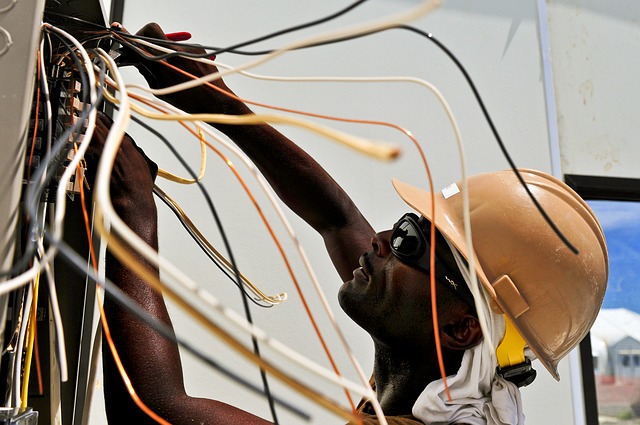Trust Fund BRE Electrical Melbourne for High-Quality Electrical Services
Wiki Article
The Ultimate Overview to Electric Installment: Tips and Methods for a Safe and Efficient Home Wiring System
In the realm of home maintenance, couple of facets are as important yet usually ignored as the electrical wiring system. By discovering the nuances of electrical safety measures and energy-saving practices, this extensive guide will lose light on the complexities of home circuitry, equipping individuals to take fee of their house's electrical framework.Recognizing Electrical Safety Procedures
To make certain the safety and security of both people and property, understanding and implementing proper electric security procedures is critical in any kind of home circuitry job. It is essential to conduct a complete examination of the electrical system before starting any type of circuitry task to recognize prospective hazards or problems that require to be attended to.In addition, making use of the proper tools and equipment is essential for keeping security during electric installments. Protected gloves, voltage testers, and protective glasses are a few of the basic safety gear that must be worn to avoid electrical shocks or crashes. It is also important to de-energize circuits prior to servicing them and to classify all circuits and breakers plainly to avoid confusion.

Vital Tools for Home Electrical Wiring
Ensuring the appropriate application of electrical safety steps in home electrical wiring projects includes utilizing a particular set of necessary devices made to facilitate the installation process successfully and safely. Some of the secret devices needed for home wiring tasks include a voltage tester for checking real-time cables, cable pole dancers for eliminating insulation from cords, a wire cutter for exactly cutting cords to size, a screwdriver set for protecting electrical elements, electrical tape for insulation and protecting connections, a cord ripper for stripping wire sheathing, and a multimeter for measuring voltage, current, and resistance.Step-by-Step Electrical Installment Guide
Beginning an electrical installment task requires thorough planning and adherence to security guidelines. Prior to starting any type of job, ensure you have a thorough strategy outlining the format of the electric system, consisting of the positioning of electrical outlets, switches, and fixtures. Consider the power requirements of each device to figure out the proper cable scale and circuit breaker dimensions.The initial step in the installation process is to close off the power supply to the location where you BRE Electrical will be functioning. Use a voltage tester to validate that the circuits are de-energized before touching any cables. Next, thoroughly get rid of existing components or electrical outlets and separate the cables.
When installing new electrical wiring, run wires through wall surfaces and ceilings, securing them in position with appropriate fittings. Adhere to neighborhood building regulations and maker instructions for appropriate cord installation and links. BRE Services. Make certain to identify wires for very easy identification and future upkeep

Troubleshooting Common Circuitry Issues
Having completed the installation process as described in the previous subtopic, fixing usual wiring concerns is a necessary ability for ensuring the security and performance of your electric system. One typical issue is a tripped circuit breaker, frequently brought on by overloaded circuits or a short circuit. To repair this, situate the breaker panel, recognize the tripped breaker by looking for the one not completely in the "on" placement, and reset it by turning it completely to "off" and after that back to "on." One more widespread trouble is a malfunctioning outlet, characterized by no power or intermittent power supply. Guarantee the outlet is not controlled by a button, then utilize a voltage tester to look for power. If there is no power, switch off the circuit, inspect the wiring links for any loosened or broken wires, and change the electrical outlet if needed. Continually flickering lights can indicate loose electrical wiring links or an overloaded circuit. To resolve this, check and tighten all cable links in the affected fixtures and switches and redistribute the load on the circuit to stabilize the electric need. On a regular basis evaluating and immediately attending to these common wiring problems will certainly preserve the safety and security and efficiency of your home electrical system.Tips for Energy-saving Electric Equipments
For optimal power effectiveness in electrical systems, applying smart methods and using energy-saving innovations is vital. One key idea for attaining an energy-efficient electric system is to update to LED illumination. Appropriate insulation and sealing of windows, doors, and electric outlets can likewise avoid energy loss, eventually minimizing the work on electrical systems.Conclusion
To conclude, applying proper safety actions, utilizing important devices, complying with a detailed setup overview, repairing usual problems, and incorporating energy-efficient tips are critical for a safe and efficient home wiring system. By sticking to these practices, home owners can make certain the longevity and capability of their electrical installments. It is important to prioritize safety and efficiency when it pertains to electric work in order to avoid prospective dangers and to preserve a dependable electrical system in the home.Report this wiki page